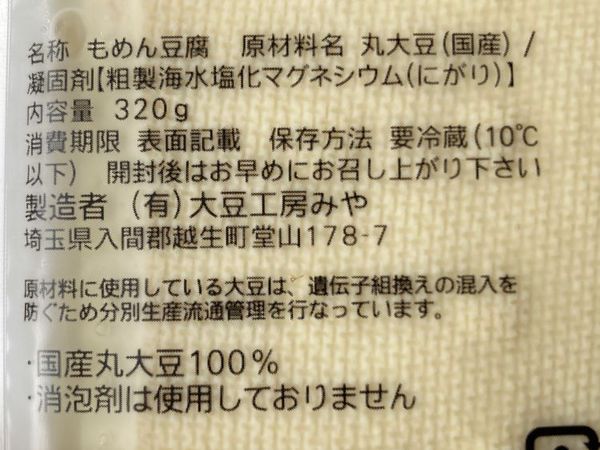Miso Soup with Eggplant and Okra, 茄子とオクラの味噌汁 [Recipes, All Seasons 1年通]
日本語のレシピは ビーガン、ベジタリアン情報満載の Hachidory から ご覧下さい。
The long hot summer has closed its curtain.
The autumn wildflowers which I farewelled a year ago has started greeting me again during my walk.
I also meet the various kinds of insects. The early autumn seems to be the best season for them to live the fullest, some are flying actively, some are hopping joyfully, and some are perching on the grass quietly.
My second pleasure in the morning is the breakfast, the regular simple meal that also gives me the energy for the day.
it is rice, Natto/fermented soybeans with grated radish, green onion and plum vinegar, seasonal vegetable pickles, Nori sea vegetable and Miso soup.
Miso soup definitely tastes better when the air is cooler.
My first sip of Miso soup gives me the great satisfaction.
This is the plain miso soup without any other ingredients except dashi and miso. I like this simple miso soup too.
So I am going to share another miso soup recipe today.
But before going to the recipe, let me talk about Miso for those who are interested in knowing about it.
If you do not need the talk and want the recipe straight away, just scroll down to the next page.
Miso is the fermented soybeans fermented together with the salt and grains such as rice and barley which are fermented with koji mold which is named Aspergillus Oryzae in English.
(I’m now not sure if this sentence is appropriate or not to make you understand.)
Miso is a traditional seasoning and consumed daily even in this modern society in Japan.
The most popular miso dish is Miso soup and it often goes with a bowl of rice in Japanese cuisine.
It is also used for marinating vegetables, for seasoning the dishes, even for sweets making.
If you visit the supermarket in Japan, you will see various kinds of Miso displayed. Some are pale yellow, some are brown, some are dark brown, and all of them showing catchy phrases on the label which might make you more confused, wondering what the differences are.
I’m afraid to say this, but unless you can read the description of
the ingredients which are usually written in the small letters on a small label or small area, you cannot know the minimum information about that particular miso.
I very seldom buy miso as I make it myself, but if I need to purchase, I would choose the one that the number of ingredients is three only. As I mentioned earlier the traditional miso is made from only three ingredients, so all the other items other than those three are something unnecessary (but probably necessary for mass production and mass market.)
I hope my preference could be one of the gauges to decide which one to take for you.
If you want to know more about the differences of Miso in details, and you can read Japanese, visit this page of “Hachidory”, where I contribute my recipes monthly in Japanese.
I am offering “Miso Making and Japanese Vegan Meal” in Airbnb Tokyo Experience.
In this experience, we make miso together, and I give a casual lecture about miso, and you can also enjoy lunch of my hand made Japanese vegan dishes using miso.
So if you have chance to visit Japan, join me to learn more about miso and also how to make miso.
I hope I can see you in Japan some day !
The recipe that I’m going to share with you today is “Miso Soup with Eggplant, Okra and Fried Tofu” as the eggplants and okra are now seasonal.
But actually you can use any ingredients of your choice to enjoy miso soup.
Here are some examples.
Miso soup with pumpkin, carrot, onion and cabbage
https://kurinascooking.blog.ss-blog.jp/2022-10-19
Miso soup with sweet corns, cucumber and tomatoes
Miso soup with napa cabbage and fried tofu
Miso soup with eggplant, myoga and shiso herb
Miso soup with winter vegetables and sake lee
https://kurinascooking.blog.ss-blog.jp/2018-02-02
Well let’s go to the recipe !
Soup Stock for Japanese Cooking 昆布だしといろいろなだし [Recipes, All Seasons 1年通]
日本語のレシピは ビーガン、ベジタリアン情報満載の Hachidory から ご覧下さい。
The soup stock called “Dashi” is basic item for Japanese cuisine as most of the Japanese dishes require Dashi in its cooking process.
In traditional Japanese cuisine, the smoked bonito fish or dried small sardine are used together with the sea vegetable called Komobu.
However in my vegan diet and cooking, I utilize only vegetables to make tasty Dashi.
Today I’m going to introduce you the several ways to make vegan Dashi, and share a recipe of “昆布だしKobudashi / Soup stock from Kombu sea vegetable” at the end.
Those soup stocks are useful to make miso soup, soup noodles such as ramen and udon, simmered vegetables and so on.
Extend your Japanese cooking experience with those Dashi, and enjoy Japanese vegan food of your own !
The soup is gentle and sweet, and I use this one almost everyday for making soup or cooking rice during sweetcorn season.
Ref. : Sweetcorn Rice
The cores of broccoli and cauliflower and the water used for blanching the flower parts of those vegetables and Komatsuna leafy green vegetables.
If the soup is with various kinds of vegetables including root vegetable, just adding a small piece of Kombu is enough to make nice soup as those vegetables release their umami into the soup.
Ref.: Vegan Stew with Sake Lee
Tofu Salad Miso Dressing豆腐サラダ味噌ドレッシングがけ [Rcipes, Summer 夏レシピ]
日本語のレシピは ビーガン、ベジタリアン情報満載の Hachidory から ご覧下さい。
It seems that the summer is not ready to pass the baton to the autumn yet.
That’s fine.
Then the autumn also might want to pass it to the winter later than usual, which is perfect for me !
I still crave for the watermelons this year !
What else do you think I crave for other than that ?
It is something white.
It is something soft and fragile.
It is something traditional for Japanese people.
It is rich in protein and easily available everywhere in Japan.
It is often loved by vegans all around the world.
I think you know what it is by now.
It is “Hiyayakko” !
Not tofu?
Yes, it is tofu, Hiyayakko is the chilled soft tofu.
It is perhaps the most popular way of eating tofu during summer in Japan.
It is super simple to prepare.
Open the package after taking out from the fridge, transfer it into the bowl, top up with the chopped green onion and grated ginger, pour the soy sauce, and just eat it !
So easy, right ?
However You wouldn’t love “Hiyayakko” without finding the fresh and good quality of tofu.
Therefore before introducing today’s tofu recipe, let me talk about tofu and also give some tips how to select the good tofu when you have selections at the grocery shops.
It is going to be a long talk, so if you do not want to spend time reading it, just scroll down to the picture of the yummy tofu salad.
You may be thinking that tofu is bland or tasteless, so need to cook with the seasonings such as spices, barbeque sauce and heavy gravies.
However when tofu is made from the good ingredients in a proper way, you might feel that it is such a waste to cook it or coat it with those strong seasonings.
Sadly many tofu sold in the supermarkets nowadays do not meet my standard. I can seldom enjoy “Hiyayakko” with those. They are a kind of tasteless like you think of tofu.
But don’t be disappointed.
Among so many tofu displayed on the shelf in the supermarkets in Japan, there are usually a few tasty ones which are made with the good quality of ingredients without unnecessary additives.
In order to find the satisfactory ones, you need to be able to read the labels first of all.
(We should make it a habit to read the label whenever we buy the products in this modern society. Don’t be deceived by the catchy words like “Healthy”, “No Additives”, “Organic”, “Vegan”.)
There are three points that you’d better check.
Defoamer
Lots of foams and bubbles surface in the pot while the soymilk is cooked during tofu making process. Those need to be removed.
In order to skip this process, using defoamer became a common practice as it can reduce the labor.
The defoamer can also increase the volume of tofu.
The description of the defoamer usage is not necessary in Japan, therefore if you do not see the word “消泡剤不使用/Defoamer-free”, the defoamer is most probably used.
Some tofu makers describe the names of the defoamer decently on the label. They are usually described as “シリコン樹脂/Silicon resin” or “グリセリン脂肪酸エステル/Glycerin fatty acid ester”.
Coagulant
This processing aid is necessary unlike the defoamer explained above.
There are mainly four types of coagulants.
They are
にがり・塩化マグネシウム / Nigari=Magnesium Chloride
塩化カルシウム/ Calcium Chloride
硫酸カルシウム / Calcium Solphate
グルコノデルタラクトン/ Gluconic Acid
It is said that each of them has different effects on tofu.
One of the reasons that tofu texture and taste differ among different brands of tofu can be attributed to the coagulant used.
I personally have not used the coagulants other than Nigari, the magnesium chloride as other three are not easily available in Japanese market.
However I recommend Nigari, which is obtained during the salt making process thus is considered the most natural coagulant.
The other three are normally chemically synthesized.
Get the liquid type of Nigari rather than flakes if it is available.
Soybeans
There are various kinds of soybeans.
Talking about the soybeans in Japan, the taste and the nutrients differ depending on the species of soybeans and also the regions where they are grown.
However it is not easy to know them as those specific seeds and regions are seldom described on the labels.
But you can know whether it is made from the soybeans of Japan or not as the makers always boast it on the package if their tofu is made from Japanese soybeans.
Though each soybeans are different, Japanese soybeans are generally tastier than the ones from the other countries as long as I know. And the protein content is higher.
There is also no worries of postharvest of chemicals.*
Therefore what you can do is to find the tofu from 100% Japanese soybeans within the criteria mentioned earlier.
And you can try several kinds among them to find the tofu of your favorite taste.
I’ve been trying to make tofu from various kinds of soybeans, however I have never made tofu as tasty as the one from the tofu factory which I am patronizing.
I asked the owner which soybeans they are using.
He told me that they combine 3 kinds of soybeans from the different regions taking each of their characteristics into consideration, and that they also went through the countless experiments.
*The postharvest treatment is normally performed prior to and after the exporting and importing process for the agricultural products.
The typical ones performed on are wheat, soybeans, corns, citrus fruits, banana, feeds to the agricultural animals.
The residual rates of those chemicals such as fungicide, pesticide and bactericide are much higher than the same ones of pre-harvest, and some are studied as carcinogenic.
Therefore you’d better avoid taking those foods from overseas as much as possible.
You might be a bit confused seeing unfamiliar terms.
Just remember tofu is the processed food after all, though, it is a protein rich healthy food as it is often said.
It is important to try to know what are used and how those ingredients are produced or raised, and who are involved and what are happening behind the products when you eat something, especially the processed food or imported food or animals, which you have not seen how they are grown nor produced.
I am offering two kinds of tofu classes using the platform of Airbnb Experience.
One is titled “Magical Soy and Japanese Vegan”, and in this experience, I teach the cooking of tofu dishes. It is the online class, so you can participate from wherever you are. https://www.airbnb.com/experiences/1879245
Another is titled “Tofu Making and Japanese Vegan Meal” and this is in person class. You can learn how to make tofu personally from me, and enjoy the lunch of tofu dishes that I prepare for you. If you have chance to visit Japan, join me in this experience! https://www.airbnb.com/experiences/317862
Let’s go to the recipe of this month !
It is Hiyayakko with the seasonal vegetable on top, in the other word, “Tofu Salad with Miso Dressing “ .

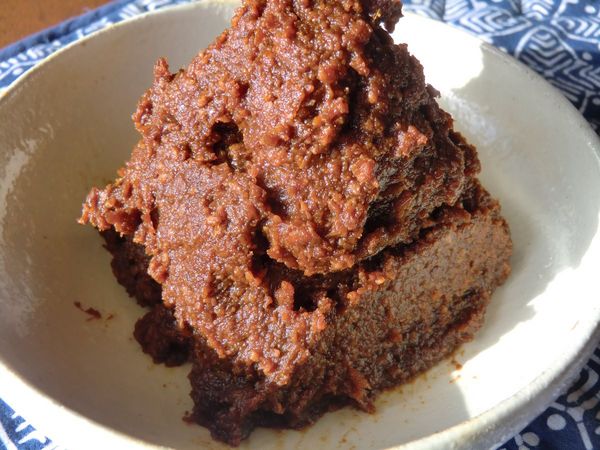
_00001-1cccb.jpg)
_00001_01.jpg)
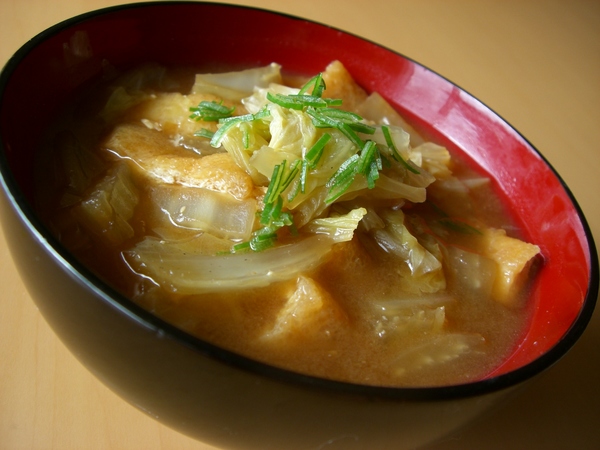
-9bf33.jpg)
2075020x20562-a7668.jpg)
_00001-08a33.jpg)
-6a8d4.jpg)
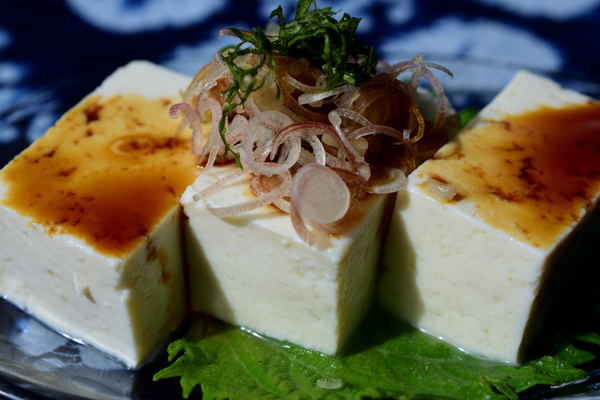
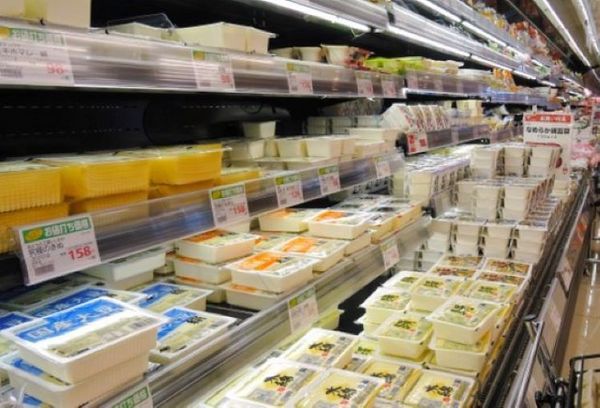
_00001.jpg)
_Moment_00001-46c65.jpg)
